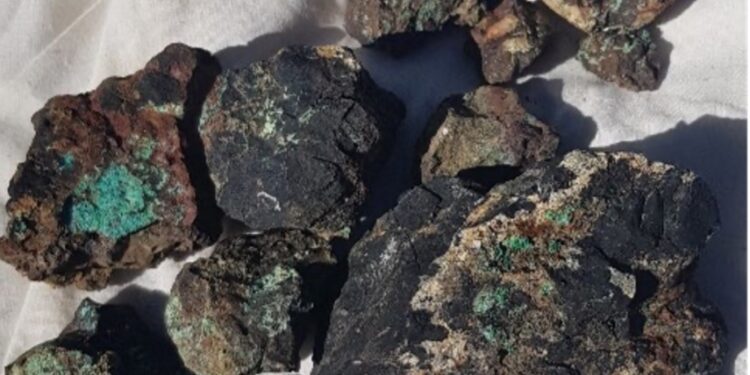Coda Minerals Limited (ASX: COD) has uncovered a number of new targets through field work at its the highly prospective Cameron River Project, located in the heart of the world-class Mt Isa mineral province in North Queensland.
Cameron River consists of 35 sq. km of copper and gold exploration tenure in the heart of the highly productive Mt Isa region, immediately north of the historic Mary Kathleen Uranium Mine.
In March 2021 the company entered into a binding Farm-in and Joint Venture Agreement giving it the right to acquire up to an 80% ownership in the Cameron River Project.
Since entering into the project, Coda has carried out three rock chip sampling programmes over the most prospective areas, collecting a total of 696 samples, generally on 300m x 100m or 150m x 100m spacings at the most prospective areas across the two tenements. Of these, a total of 31 returned anomalous copper (> 0.1% Cu) and 16 returned anomalous gold (>0.1 g/t).
“Earlier this year, we farmed into the Cameron River Project on the basis of its clear prospectivity and lack of systematic historical exploration knowing that we had some legwork to do on the ground,” CEO, Chris Stevens, said.
“These results are just the first step in that journey, but already we are seeing exceptional results from areas of known prospectivity as well as the emergence of new areas of interest across the tenure.
“Although these headline numbers are impressive, the Mt Isa region is well known for supergene enrichment to high grades of copper and gold in rock chip samples, and these do not always indicate a material copper endowment nearby.
“In this case however, our enthusiasm comes more from the support that these geochemical results provide for targets which were generated using a multifaceted approach emphasising geophysics and structural geology, as well as the scale, lateral extent and repeatability of the Copper Weed/Rebound anomalism in particular.
“With numerous walk-up drill targets now defined at the surface, the potential of the Cameron River Project for a short-term discovery is stronger than ever.
“Clearly, our primary focus remains on the ongoing activity at our flagship Elizabeth Creek Project in South Australia, however, we will also be moving quickly to test these exciting new targets when the weather allows in the new year.”
Copper Weed/Rebound Prospect Area
The historical Copper Weedand Reboundprospects have been the focus of the majority of historical exploration on the tenure, and validation of historical rock chipping was one of the primary objectives of the programme. A total of 37 samples were taken in the area around these two prospects.
The prospectivity for copper-gold mineralisation was confirmed, with several of the most highly mineralised samples collected from this area. Better samples from the area included R21CR0142 (12.6% Cu, 2.72g/t Au and 4.3g/t Ag), R21CR0143 (9.2% Cu, 2.74g/t Au and 156.7g/t Ag) and R21CR0310 (22.9% Cu, 0.29g/t Au and 4.1g/t Ag).
These programmes have expanded the scale of the Copper Weed-Rebound geochemical anomaly, which currently consists of a NNE aligned anomalous copper zone defined by modern and historical rock chips extending over at least 2,000m N/S and 800m E/W in the eastern half of the project, with potential to expand to the north.
This zone is coincident with several fault splays which extend north from the regional scale Cameron Fault. Rock chips taken from traverses over this area have highlighted anomalous gold and copper associated with the faults with best results of 5.14% Cu (R21CR0285), and 0.15% Cu (R21CR0486).
Another splay from the Cameron fault southeast of Reboundwhich defines the boundary between the Corella Formation and the Knapdale Quartzite was also tested, returning anomalous gold and copper (2.51g/t Auand 0.2% Cu in sample R21CR0074, 0.8% Cu in sample R21CR0092, and 0.4g/t Au in sample R21BTH0007).
For further information please visit: https://www.codaminerals.com/












